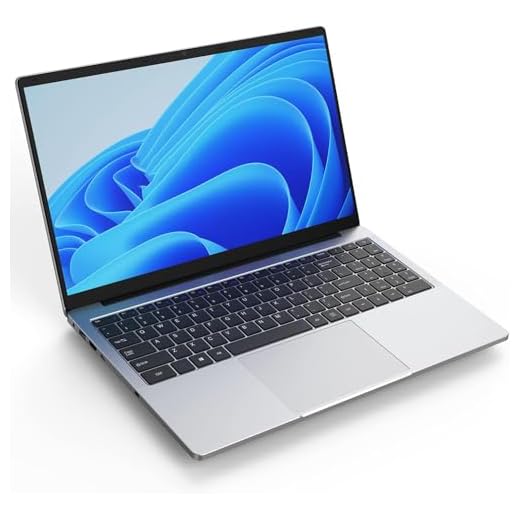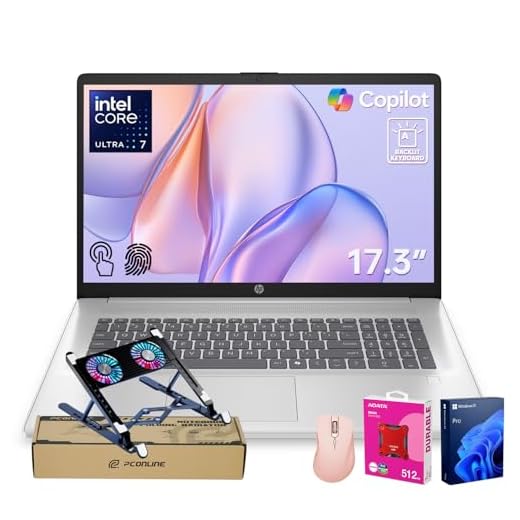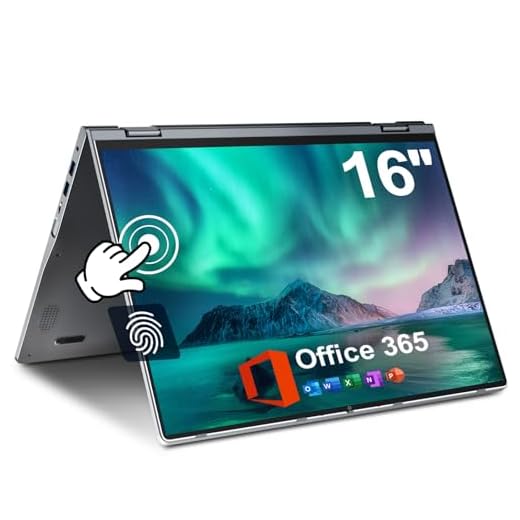







Finding the right laptop for Linux can be a daunting task. With countless options available in the market, it can be overwhelming to decide which one will best suit your needs. But fear not, because in this article, we will guide you through the process of choosing the perfect laptop for your Linux setup. From considering the compatibility of hardware components to ensuring good battery life, we will cover all the important factors to help you make an informed decision. So, let’s dive in and explore how you can choose a laptop that seamlessly runs your favorite Linux distribution.

Processor
Consider the CPU architecture
When choosing a laptop for Linux, it is important to consider the CPU architecture that is compatible with the Linux operating system. The most common CPU architectures are x86 and ARM. The x86 architecture is widely supported by Linux distributions and is suitable for general computing needs. On the other hand, the ARM architecture is commonly used in mobile devices and may have limited compatibility with certain Linux distributions. Therefore, it is recommended to choose a laptop with an x86 CPU architecture for a greater range of compatibility with Linux.
Choosing the right number of cores
The number of cores in a processor has a direct impact on the performance of a laptop. For Linux users, it is generally recommended to choose a processor with at least four cores. This allows for better multitasking capabilities and smoother performance when running resource-intensive applications. However, if you primarily use your laptop for basic tasks such as web browsing and word processing, a dual-core processor may suffice. Consider your specific needs and usage patterns when deciding on the right number of cores for your Linux laptop.
Checking for compatibility with Linux
Not all processors are created equal when it comes to compatibility with Linux. It is important to check for compatibility with the specific Linux distribution you plan to use on your laptop. Some processors may require additional drivers or firmware to be installed for full compatibility. Research online forums and community resources to see if other Linux users have had success with the processor you are considering. It is also worth noting that processors from well-known manufacturers such as Intel and AMD generally have better compatibility with Linux compared to lesser-known or budget brands.
RAM
Determining the required RAM capacity
The amount of RAM, or memory, in a laptop is crucial for smooth and efficient multitasking. When choosing a laptop for Linux, consider the type and number of applications you typically use simultaneously. If you are a casual user who primarily uses the internet, word processing software, and lightweight applications, 4GB of RAM should suffice. However, for more demanding tasks such as video editing or running virtual machines, it is recommended to opt for 8GB or more of RAM. Carefully assess your needs to determine the required RAM capacity for your Linux laptop.
Considering the RAM speed
In addition to the capacity, the speed of the RAM also plays a role in the overall performance of your Linux laptop. The speed of RAM is measured in megahertz (MHz) and higher speeds result in faster data transfer and better overall system responsiveness. While higher RAM speeds can enhance performance, it is important to note that they may come at a higher cost. Consider your budget and the specific requirements of your Linux applications when deciding on the RAM speed. It is also advisable to check the compatibility of the RAM with the laptop’s motherboard to ensure optimal performance.
Choosing between single-channel and dual-channel RAM
When selecting RAM for your Linux laptop, you may come across the terms “single-channel” and “dual-channel”. These refer to the way the RAM modules are configured in the laptop. Single-channel RAM operates with a single module, while dual-channel RAM uses two modules, allowing for increased data transfer rates. If your laptop has two RAM slots, it is generally recommended to opt for dual-channel RAM for better performance. However, if you plan on upgrading the RAM in the future, choosing a laptop with a single-channel configuration may offer more flexibility. Consider your current and future needs before deciding on the type of RAM configuration for your Linux laptop.
Storage
Deciding between SSD and HDD
The type of storage in a laptop has a significant impact on its overall performance and user experience. When choosing a laptop for Linux, the two main options to consider are Solid State Drives (SSD) and Hard Disk Drives (HDD). SSDs offer faster data access and boot times compared to HDDs, resulting in snappier performance. They are also more resistant to physical shock and consume less power. However, SSDs tend to be more expensive and offer less storage capacity compared to HDDs. If you prioritize speed and responsiveness, an SSD is the recommended choice for your Linux laptop. However, if storage capacity and cost are of higher importance, an HDD may be a more suitable option.
Consider the storage capacity
The storage capacity of a laptop determines how much data, such as documents, programs, and media files, it can hold. When selecting a Linux laptop, consider your storage needs. If you primarily use cloud storage or external hard drives to store your data, a laptop with a smaller storage capacity, such as 256GB or 512GB, may be sufficient. However, if you work with large files or prefer to keep all your data locally, it is advisable to choose a laptop with a larger storage capacity, such as 1TB or more. Remember that Linux distributions typically require less storage space compared to other operating systems, so you may be able to get by with a smaller capacity than you would with Windows or macOS.
Choosing the right interface
The storage interface is an important consideration when selecting a laptop for Linux. The two most common storage interfaces are Serial ATA (SATA) and PCIe (PCI Express). SATA interfaces are widely supported and provide good performance for most users. However, if you require faster data transfer rates, consider opting for a laptop with a PCIe interface. PCIe interfaces offer significantly faster data transfer speeds compared to SATA, making them ideal for tasks such as video editing or running virtual machines. Assess your storage needs and workload to determine the right storage interface for your Linux laptop.
Display
Determining the screen size
The screen size of a laptop affects both usability and portability. When choosing a laptop for Linux, consider the activities you engage in and your preferences. If you primarily use your laptop for productivity tasks such as writing code or working with spreadsheets, a smaller screen size, such as 13 or 14 inches, may be sufficient. Smaller screen sizes are also ideal for portability, as they often result in a lighter and more compact laptop. However, if you use your laptop for multimedia consumption or gaming, a larger screen size, such as 15 or 17 inches, may enhance your visual experience. Consider your specific needs and priorities to determine the right screen size for your Linux laptop.
Considering the resolution
The resolution refers to the number of pixels displayed on the screen and affects the clarity and sharpness of the images and text. Higher resolutions result in crisper visuals, making them desirable for tasks such as photo editing or watching high-definition videos. When choosing a laptop for Linux, consider the resolution that is compatible with your needs and budget. Common resolutions include HD (1366×768), Full HD (1920×1080), and even higher resolutions such as QHD (2560×1440) or 4K (3840×2160). Remember that higher resolutions may require more processing power and may impact battery life. Assess your requirements and preferences to determine the appropriate resolution for your Linux laptop.
Choosing between glossy and matte displays
The surface finish of the laptop display can have an impact on the viewing experience and outdoor usability. Glossy displays offer vibrant colors and high contrast, making them suitable for multimedia consumption. However, they tend to reflect more light, which can be problematic in brightly lit environments or under direct sunlight. On the other hand, matte displays have an anti-glare coating that reduces reflections and improves visibility in various lighting conditions. Matte displays are ideal for users who work in well-lit environments or frequently use their laptops outdoors. Consider your usage scenario and personal preferences when choosing between a glossy or matte display for your Linux laptop.

Graphics
Deciding on integrated or dedicated graphics
The graphics processing unit (GPU) is responsible for rendering images and videos on the screen. When choosing a laptop for Linux, you have the option of integrated graphics, where the GPU is integrated into the CPU, or dedicated graphics, where a separate GPU is present. Integrated graphics are suitable for most everyday tasks, such as web browsing or word processing, and they consume less power compared to dedicated graphics. However, if you engage in resource-intensive activities such as video editing or gaming, a laptop with dedicated graphics may offer better performance. Consider your specific needs and usage patterns to determine whether integrated or dedicated graphics are more suitable for your Linux laptop.
Checking compatibility with Linux
While most modern GPUs are compatible with Linux, it is still important to check for compatibility with the specific Linux distribution you plan to use. Some GPUs may require additional drivers or configuration to work optimally with Linux. Research online forums and community resources to see if other Linux users have had success with the GPU you are considering. Popular GPU manufacturers such as NVIDIA and AMD usually provide drivers and support for Linux, but it is essential to ensure compatibility before making a purchase. Checking compatibility will help avoid frustration and ensure smooth performance with your Linux laptop.
Considering the graphics card manufacturer
When selecting a laptop for Linux, it is also worth considering the graphics card manufacturer. Different manufacturers may offer varying levels of Linux support and driver compatibility. NVIDIA, for example, has historically provided good support for Linux and offers proprietary drivers for their GPUs. AMD, on the other hand, has made significant strides in recent years to improve Linux support and offers open-source drivers. Additionally, Intel’s integrated graphics have excellent Linux compatibility out of the box. Consider the reputation and track record of the graphics card manufacturer in terms of Linux support when making your decision.
Battery Life
Evaluating the battery capacity
Battery life is an important consideration when selecting a laptop for Linux, especially if you frequently use your laptop on the go. Battery capacity is measured in watt-hours (Wh) and determines how long a laptop can run on a single charge. Higher battery capacities generally result in longer battery life. When deciding on a Linux laptop, consider your typical usage patterns and the amount of battery life you require. If you primarily use your laptop for lightweight tasks such as web browsing or word processing, a laptop with a smaller battery capacity may suffice. However, if you engage in more demanding tasks or require extended battery life, it is advisable to choose a laptop with a larger battery capacity.
Considering power-saving features
To maximize the battery life of your Linux laptop, look for devices that offer power-saving features. These features can include adaptive brightness, which adjusts the screen brightness based on ambient lighting conditions, and power management settings that optimize the usage of hardware components. Additionally, some laptops may have the option to switch between integrated and dedicated graphics, allowing you to use the integrated graphics when running on battery power to conserve energy. Keep an eye out for laptops that offer these power-saving features, as they can significantly extend your battery life and enhance your overall user experience.
Looking for efficient cooling mechanisms
Heat generation can have an impact on battery life, performance, and the overall longevity of a laptop. When choosing a Linux laptop, look for devices that have efficient cooling mechanisms in place. Efficient cooling ensures that the processor and other components operate at optimal temperatures, reducing the chances of thermal throttling, which can negatively impact performance. Dual or multiple fans, heat pipes, and well-designed heat sinks are some features to look for in a laptop to ensure effective heat dissipation. A properly cooled laptop not only enhances performance but can also contribute to longer battery life and prolong the lifespan of your Linux laptop.
Weight and Portability
Deciding on the desired laptop weight
The weight of a laptop plays a crucial role in its portability and ease of use. When selecting a Linux laptop, consider your portability needs and the environments in which you will be using it. If you frequently travel or carry your laptop around, a lightweight laptop is recommended. Ultrabooks or thin and light laptops typically weigh around 2 to 3 pounds, making them ideal for users on the go. However, if you primarily use your laptop at a fixed location such as a desk or home, a slightly heavier laptop with a larger screen may offer a better user experience. Assess your portability needs and preferences to determine the ideal weight for your Linux laptop.
Considering the form factor
The form factor of a laptop refers to its physical design and shape. Different form factors offer varying levels of portability and functionality. Traditional clamshell laptops are the most common form factor and provide a good balance between portability and usability. Convertible or 2-in-1 laptops offer the flexibility of using the device as a laptop or a tablet by rotating the screen or detaching the keyboard. These are ideal for users who require both productivity and touchscreen capabilities. There are also compact laptops such as netbooks or Chromebooks, which prioritize portability while sacrificing some performance. Consider your usage requirements and preferences to choose the form factor that best suits your needs.
Looking for features like a backlit keyboard and fingerprint reader
When selecting a Linux laptop, consider additional features that can enhance your overall user experience. Features such as a backlit keyboard can be beneficial for users who frequently work in low-light environments or during nighttime. It allows for easier typing by illuminating the keys. A fingerprint reader provides an added layer of security by allowing you to log in with a simple touch, eliminating the need for passwords. These features can greatly improve usability and convenience, so if they align with your needs, look for a Linux laptop that offers them.
Connectivity
Checking for the required ports
Connectivity is an important aspect to consider when choosing a laptop for Linux. Ensure that the laptop has the necessary ports to connect your peripherals and accessories. Common ports to look for include USB (Universal Serial Bus) ports, HDMI (High-Definition Multimedia Interface) ports, and audio jacks. USB ports are essential for connecting devices such as external hard drives, keyboards, and mice. HDMI ports allow for connecting external displays or TVs. Audio jacks are needed to connect headphones or external speakers. Assess your connectivity needs and ensure that the laptop offers the appropriate ports to accommodate them.
Considering wireless connectivity options
In addition to wired connectivity, wireless connectivity options are also crucial for a seamless user experience. When choosing a Linux laptop, ensure that it has built-in Wi-Fi capabilities that support the latest standards such as 802.11ac or Wi-Fi 6 (802.11ax). This ensures faster and more reliable wireless internet connectivity. Bluetooth connectivity is also important for connecting wireless peripherals such as mice, keyboards, or headphones. Look for laptops with Bluetooth 4.0 or higher for improved compatibility with a wide range of devices. Robust wireless connectivity options will ensure that you can stay connected and productive with your Linux laptop.
Deciding between USB 2.0, USB 3.0, or USB 3.1
USB ports are a common feature in laptops and are used for connecting numerous devices. When selecting a Linux laptop, pay attention to the version of USB ports available. USB 2.0 is the most basic and offers relatively slower data transfer speeds compared to USB 3.0 or higher. USB 3.0 ports provide faster data transfer rates and are ideal for devices such as external hard drives or high-speed storage devices. USB 3.1 ports offer even faster data transfer speeds and are becoming more common in newer laptops. Consider your specific requirements and the devices you plan to connect to your Linux laptop when deciding on the USB version.
Operating System
Understanding differences between Linux distributions
Linux is an open-source operating system with a wide range of distributions, each with its own strengths and focus areas. When choosing a laptop for Linux, it is important to understand the differences between distributions to select the one that best suits your needs. Some popular distributions include Ubuntu, Fedora, Debian, and Linux Mint. Ubuntu is known for its user-friendly interface and widespread community support. Fedora is geared towards technically inclined users and emphasizes the use of cutting-edge software. Debian is known for its stability and suitability for servers. Linux Mint provides a polished and user-friendly desktop experience. Research the various distributions to find the one that aligns with your preferences and requirements.
Choosing a user-friendly distribution
For newcomers to the Linux ecosystem, it is generally recommended to choose a user-friendly distribution that offers a smooth and intuitive user experience. User-friendly distributions provide an interface and software that is easy to navigate and use, making it easier for beginners to adapt. One such distribution is Ubuntu, which focuses on usability and offers a comprehensive set of applications and tools. Linux Mint is another user-friendly distribution that provides a visually appealing and intuitive desktop environment. These distributions typically come with pre-installed software and drivers, reducing the need for manual configuration. Consider your level of familiarity with Linux and your desired level of user-friendliness when selecting a distribution for your Linux laptop.
Considering ease of driver installation
Driver compatibility and installation can be a crucial factor when choosing a laptop for Linux. While most hardware components are supported by Linux, some manufacturers may only provide drivers for Windows or have limited Linux support. When selecting a Linux laptop, it is advisable to choose hardware components that are known to have good driver support for Linux. Research online forums and community resources to check if other Linux users have encountered any issues with specific hardware. Additionally, consider distributions that have good built-in driver support and make it easy to install any necessary drivers. A seamless driver installation process will save you time and ensure optimal hardware performance with your Linux laptop.
Budget
Setting a budget range
Setting a budget is an important step when choosing a laptop for Linux. Laptops come in a wide range of prices, and having a predetermined budget range can help narrow down your options. Consider the features and specifications you require for your specific needs and set a budget that aligns with those requirements. Keep in mind that while more expensive laptops may offer higher performance or additional features, it may not always be necessary to stretch your budget to the maximum. There are often budget-friendly options that provide excellent value for money, so be sure to do thorough research within your chosen budget range.
Considering value for money
When selecting a Linux laptop, it is important to consider the value for money offered by each option. Value for money refers to the balance between the laptop’s price and the features it offers. Evaluate the specifications and features of different laptops within your budget range and compare them to determine which offers the best value. Look for laptops with a good combination of performance, reliability, and user-friendly features. It is also worth considering the reputation and customer reviews of the laptop brand to assess its overall quality and reliability. Finding a laptop that offers a good balance of features and price will ensure that you make a sound investment for your Linux needs.
Evaluating long-term cost-effectiveness
When choosing a laptop for Linux, it is important to consider the long-term cost-effectiveness. While sticker price is an important factor, it is equally essential to assess the long-term costs associated with the laptop. Consider factors such as maintenance and upgrade costs, as well as the availability and cost of any additional peripherals or accessories you may require. Additionally, look for laptops that have a reputation for durability and reliability, as this can reduce the need for future repairs or replacements. Investing in a laptop that will provide long-term value and minimize the total cost of ownership will ultimately result in a more cost-effective solution for your Linux needs.
In conclusion, choosing a laptop for Linux involves careful consideration of several factors. From the processor and RAM to storage, display, graphics, battery life, weight, connectivity, operating system, and budget, each aspect plays a role in the overall user experience and compatibility with the Linux operating system. By evaluating your specific needs and priorities, researching compatibility and performance reviews, and considering long-term cost-effectiveness, you can select a Linux laptop that meets your requirements and provides a seamless and enjoyable computing experience. With the right laptop, you can fully embrace the power and flexibility of the Linux operating system and unlock a world of possibilities.






